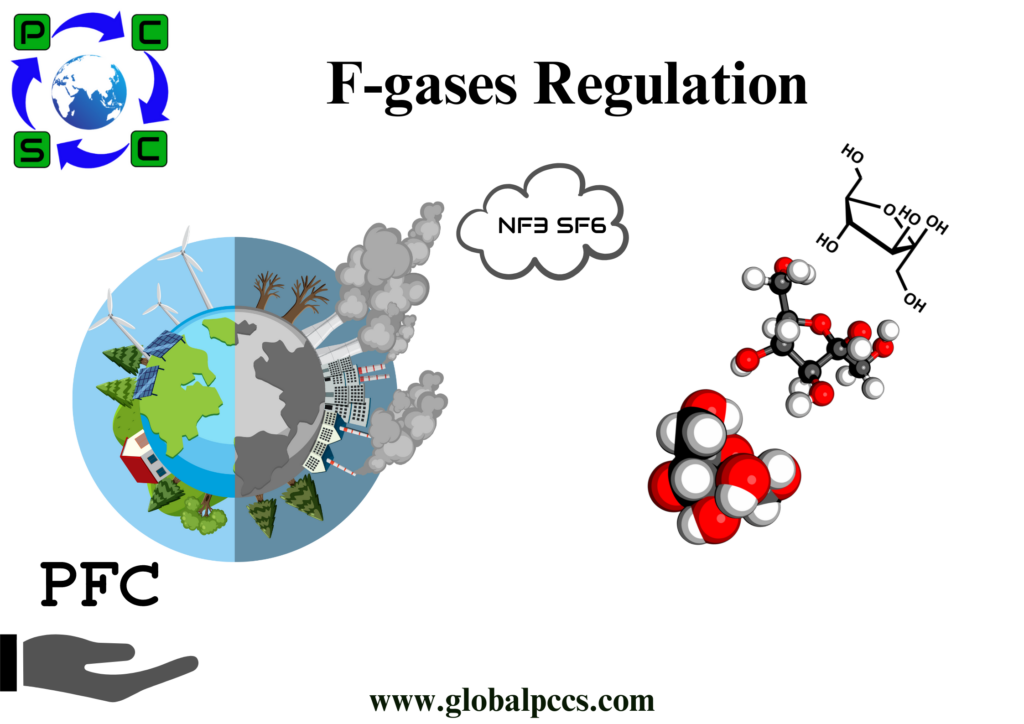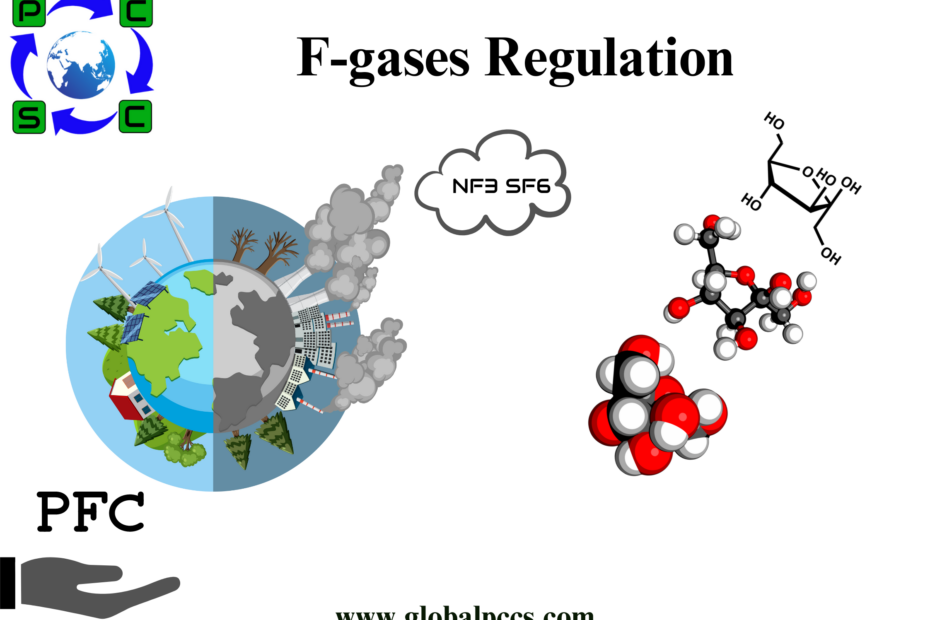 Fluorinated gases (F-gases) are man-made gases used in a range of industrial applications. F-gases are often used as substitutes for ozone-depleting substances because they do not damage the atmospheric ozone layer. However, F-gases are powerful greenhouse gases, with an even higher warming potential than carbon dioxide (CO2).
Fluorinated gases (F-gases) are man-made gases used in a range of industrial applications. F-gases are often used as substitutes for ozone-depleting substances because they do not damage the atmospheric ozone layer. However, F-gases are powerful greenhouse gases, with an even higher warming potential than carbon dioxide (CO2).
They are potent greenhouse gases with a high global warming potential (GWP), and their regulation is a crucial part of climate change mitigation efforts.
To control emissions from F-gases, including hydrofluorocarbons (HFCs), the European Union has adopted two legislative acts: the F-gas Regulation and the MAC (Mobile Air Conditioning systems) Directive. The EEA contributes by collecting data reported by companies on the production, import, export, destruction and feedstock use of F-gases in the EU.
Types of F-Gases
- Hydrofluorocarbons (HFCs): Commonly used as refrigerants, in air conditioning systems, and in foams.
- Perfluorocarbons (PFCs): Used in electronics manufacturing and some medical applications.
- Sulphur Hexafluoride (SF6): Used as an insulating gas in high-voltage electrical equipment.
- Nitrogen Trifluoride (NF3): Used in the manufacture of semiconductors and LCDs.
Key Regulatory Frameworks
- Kyoto Protocol: Included F-gases among the six major greenhouse gases to be reduced.
- EU F-Gas Regulation:
- Regulation (EU) No 517/2014: This regulation aims to reduce F-gas emissions by two-thirds of 2010 levels by 2030 through measures such as:
- Phasing down the use of HFCs.
- Ban on the use of F-gases in some products and equipment where alternatives are available.
- Prevention of emissions through proper equipment handling.
- 2022 Amendment: Proposes more stringent measures and earlier phase-out dates for certain applications.
- Regulation (EU) No 517/2014: This regulation aims to reduce F-gas emissions by two-thirds of 2010 levels by 2030 through measures such as:
- Montreal Protocol & Kigali Amendment: Originally aimed at phasing out ozone-depleting substances, the Kigali Amendment (2016) extends the protocol to include the phase-down of HFCs.
The objective of this Regulation is to protect the environment by reducing emissions of fluorinated greenhouse gases.
- Establishes rules on containment, use, recovery and destruction of fluorinated greenhouse gases, and on related ancillary measures.
- Imposes conditions on the placing on the market of specific products and equipment that contain, or whose functioning relies upon, fluorinated greenhouse gases
- Imposes conditions on specific uses of fluorinated greenhouse gases
- Establishes quantitative limits for the placing on the market of hydrofluorocarbons
Prevention of emissions of fluorinated greenhouse gases
- The intentional release of fluorinated greenhouse gases into the atmosphere shall be prohibited where the release is not technically necessary for the intended use.
- Operators of equipment that contain fluorinated greenhouse gases shall take precautions to prevent the unintentional release (‘leakage’) of those gases. They shall take all measures which are technically and economically feasible to minimise leakage of fluorinated greenhouse gases.
- Where a leakage of fluorinated greenhouse gases is detected, the operators shall ensure that the equipment is repaired without undue delay.
- Where the equipment is subject to leak checks under Article 4(1), and a leak in the equipment has been repaired, the operators shall ensure that the equipment is checked by a certified natural person within one month after the repair to verify that the repair has been effective.
- Natural persons carrying out the tasks referred to in points (a) to (c) of Article 10(1) shall be certified in accordance with Article 10(4) and (7) and shall take precautionary measures to prevent leakage of fluorinated greenhouse gases.
- Undertakings carrying out the installation, servicing, maintenance, repair or decommissioning of the equipment listed in points (a) to (d) of the Article 4(2) shall be certified in accordance with Article 10(6) and (7) and shall take precautionary measures to prevent leakage of fluorinated greenhouse gases. the Article 4(2) shall be certified in accordance with
- Article 10(6) and (7) and shall take precautionary measures to prevent leakage of fluorinated greenhouse gases.
Compliance Measures
- Leakage Checks and Repairs: Regular checks for equipment containing F-gases to ensure there are no leaks.
- Record Keeping: Detailed records of the quantities of F-gases used, recovered, and emitted.
- Certification and Training: Personnel involved in the handling of F-gases must be properly trained and certified.
- Recovery and Recycling: Ensuring that F-gases are properly recovered for recycling, reclamation, or destruction at the end of the equipment’s life.
Alternatives to F-Gases
- Natural Refrigerants: Such as ammonia (NH3), carbon dioxide (CO2), and hydrocarbons (propane, butane).
- Low-GWP HFCs and HFOs: Hydrofluoroolefins (HFOs) have significantly lower GWPs compared to traditional HFCs.
- Technological Innovations: Development of new systems that minimize or eliminate the need for F-gases.
Global Impact
Effective regulation of F-gases can significantly reduce greenhouse gas emissions and combat climate change. Countries and regions are increasingly aligning their policies with international agreements to achieve substantial reductions in F-gas use and emissions.
Challenges
- Technological and Economic Barriers: Transitioning to alternatives may require significant investments and technological advancements.
- Compliance and Enforcement: Ensuring that all stakeholders comply with regulations can be challenging, especially in regions with limited resources.
- Global Coordination: Harmonizing regulations across countries to avoid market imbalances and ensure comprehensive global impact.
Future Directions
- Stricter Regulations: Anticipated tightening of regulations to accelerate the phase-out of high-GWP F-gases.
- Innovation and Research: Continued research into more sustainable and cost-effective alternatives.
- International Cooperation: Enhanced global efforts and support to developing countries to ensure a uniform reduction in F-gas emissions.
These regulations are vital for addressing climate change and reducing the environmental impact of industrial and commercial activities that rely on F-gases.








 Authorised IMDS & CDX Training & Consulting partner for
Authorised IMDS & CDX Training & Consulting partner for






